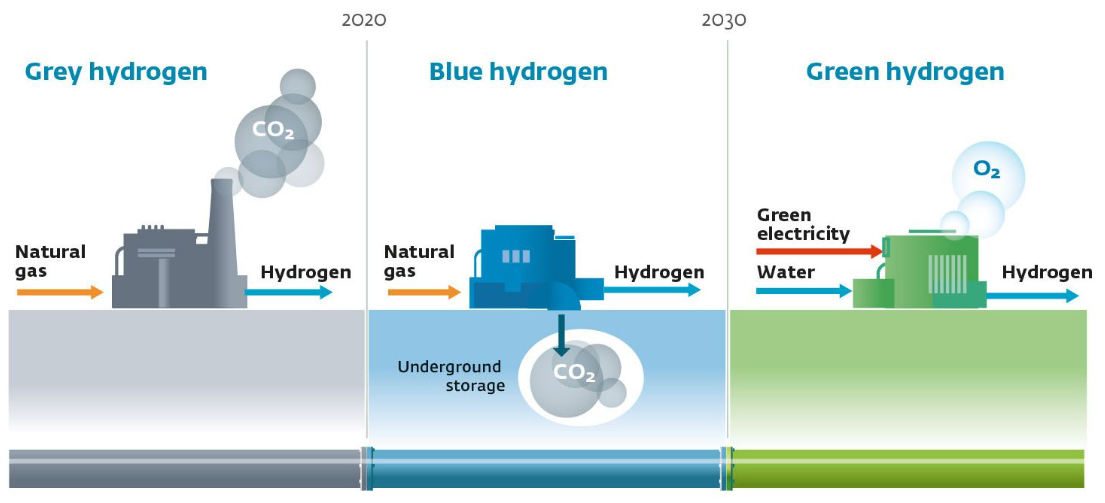Biodiversity & Environment
Green Steel
- 07 Oct 2022
- 7 min read
For Prelims: Green Steel, Pradhan Mantri Urja Ganga Project, National Hydrogen Energy Mission (NHM), Blue Hydrogen, Green Hydrogen, India’s Commitments at the Conference of the Parties (COP26).
For Mains: Green Steel, Significance, Challenge and the Way Forward.
Why in News?
A clean steel sector in Eastern India can become essential for the country's transition to ‘Green Steel’.
- To move towards ‘Green Steel’, the Petroleum and Natural Gas Ministry launched Pradhan Mantri Urja Ganga Project in Eastern India in 2019 to provide gas to all steel plants located in the area.
What is Green Steel?
- About:
- Green Steel is the manufacturing of steel without the use of fossil fuels.
- This can be done by using low-carbon energy sources such as hydrogen, coal gasification, or electricity instead of the traditional carbon-intensive manufacturing route of coal-fired plants.
- It eventually lowers greenhouse gas emissions, cuts costs and improves the quality of steel.
- Low-carbon hydrogen (blue hydrogen and green hydrogen) can help reduce the steel industry’s carbon footprint.
- National Hydrogen Energy Mission (NHM) capitalizes on hydrogen for a cleaner alternative fuel option.
- Green Steel is the manufacturing of steel without the use of fossil fuels.
- Ways of Production:
- Substituting the Primary Production Processes with Cleaner Alternatives:
- Carbon capture, utilization and storage (CCUS)
- Replacing conventional sources of energy with low-carbon hydrogen
- Direct electrification through electrolysis of iron ore
- Substituting the Primary Production Processes with Cleaner Alternatives:
- Significance:
- The steel industry is the largest industrial sector in terms of intensive energy and resource use. It is one of the biggest emitters of carbon dioxide (CO2).
- In view of commitments made at the Conference of the Parties (COP26) climate change conference, the Indian steel industry needs to reduce its emissions substantially by 2030 and hit net-zero carbon emissions by 2070.
- Challenge:
- At present, the country’s iron and steel sector is financially weak. However, Green Steel manufacturing is an expensive process involving high cost.
What are the Types of Hydrogen?
- Green hydrogen is produced by electrolysis of water using renewable energy (like Solar, Wind) and has a lower carbon footprint.
- Brown hydrogen is produced using coal where the emissions are released to the air.
- Grey hydrogen is produced from natural gas where the associated emissions are released to the air.
- Blue hydrogen is produced from natural gas, where the emissions are captured using carbon capture and storage.
What is the Status of Steel Production in India?
- Production: India is currently the world’s 2nd largest producer of crude steel, producing 120 Million Tonnes (MT) crude steel during financial year 2021- 2022.
- Reserves: More than 80 per cent of the country’s reserves are in the states of Odisha, Jharkhand, West Bengal, Chhattisgarh and the northern regions of Andhra Pradesh.
- Important steel-producing centers are Bhilai (Chhattisgarh), Durgapur (West Bengal), Burnpur (West Bengal), Jamshedpur (Jharkhand), Rourkela (Odisha), Bokaro (Jharkhand).
- Consumption: India is the 2nd largest consumer of finished steel in 2021 (106.23 MT), preceded by China as the largest steel consumer as per World Steel Association.
- Reserves: More than 80 per cent of the country’s reserves are in the states of Odisha, Jharkhand, West Bengal, Chhattisgarh and the northern regions of Andhra Pradesh.
Way Forward
- Cost-effective technologies must be adopted to decarbonize the steel sector. Many old plants need to be refurbished and energy efficiency measures for electricity-based manufacturing have bright prospects for further investment.
- Scrap can be utilized in lowering the energy used for making steel for which a suitable infrastructure for recycling and the Steel Scrap Recycling Policy needs to be constructed.
- The government and public sector should commit to the purchase of environmentally sustainable green steel to drive the demand for the same.
- Public and Private sectors need to generate green standards and similar types of labels for the market growth of green steel.
- Old and polluting plant facilities, which have reached the end of their life, should be removed.
UPSC Civil Services Examination Previous Year Question (PYQ)
Prelims
Q. Which of the following are some important pollutants released by steel industry in India? (2014)
- Oxides of sulphur
- Oxides of nitrogen
- Carbon monoxide
- Carbon dioxide
Select the correct answer using the code given below:
(a) 1, 3 and 4 only
(b) 2 and 3 only
(c) 1 and 4 only
(d) 1, 2, 3 and 4
Ans: (d)
Exp:
- Steel industry creates pollution as it uses coal and Iron ore whose combustion releases various Polycyclic Aromatic Hydrocarbons (PAH) compounds and oxides into the air.
- In steel furnace, coke reacts with iron ore, releasing iron and generating major environmental pollutants.
- The pollutants released from steel producing units are:
- Carbon Monoxide (CO), hence, 3 is correct.
- Carbon Dioxide (CO2), hence, 4 is correct.
- Oxides of Sulphur (SOx), hence, 1 is correct.
- Oxides of Nitrogen (NOx), hence, 2 is correct.
- PM 2.5,
- Waste Water,
- Hazardous waste,
- Solid waste.
- However, technological interventions in the form of air filters, water filters and other water saving, power saving and closed container can reduce emissions. Therefore, option D is the correct answer
Mains
Q. Account for the present location of iron and steel industries away from the source of raw material, by giving examples. (2020)
Q. Account for the change in the spatial pattern of the Iron and Steel industry in the world. (2014)





